Welcome to DU!
The truly grassroots left-of-center political community where regular people, not algorithms, drive the discussions and set the standards.
Join the community:
Create a free account
Support DU (and get rid of ads!):
Become a Star Member
Latest Breaking News
General Discussion
The DU Lounge
All Forums
Issue Forums
Culture Forums
Alliance Forums
Region Forums
Support Forums
Help & Search
Celerity
Celerity's Journal
Celerity's Journal
May 1, 2021
https://inews.co.uk/news/uk/monster-300-tonne-fatberg-blocks-birmingham-sewer-981195

A giant one kilometre long fatberg has clogged a Birmingham sewer.
Engineers are working around the clock to clear the blockage believed to be more than a metre high and weigh around 300 tonnes, an equivalent to 250 cars. Fatbergs are made up of congealed fat and oil and non-flushable items such as wet wipes, nappies and condoms.
Water services company Severn Trent said the “monster” fatberg, clogging a sewer in the Hodge Hill area of the city, was one of the biggest it had ever had encountered and might take until June to remove.
Operations manager Scott Burgin said: “It’s a massive project and it’s not resolved yet. “This giant mass is the result of everyone occasionally washing and flushing the wrong things down the drains, and not realising the impact it’s having.”
snip

Monster 300-tonne fatberg blocks Birmingham sewer
Engineers are working around the clock to remove the mass, made up of congealed fat and oil and non-flushable items such as wet wipes, nappies and condoms.https://inews.co.uk/news/uk/monster-300-tonne-fatberg-blocks-birmingham-sewer-981195

A giant one kilometre long fatberg has clogged a Birmingham sewer.
Engineers are working around the clock to clear the blockage believed to be more than a metre high and weigh around 300 tonnes, an equivalent to 250 cars. Fatbergs are made up of congealed fat and oil and non-flushable items such as wet wipes, nappies and condoms.
Water services company Severn Trent said the “monster” fatberg, clogging a sewer in the Hodge Hill area of the city, was one of the biggest it had ever had encountered and might take until June to remove.
Operations manager Scott Burgin said: “It’s a massive project and it’s not resolved yet. “This giant mass is the result of everyone occasionally washing and flushing the wrong things down the drains, and not realising the impact it’s having.”
snip
May 1, 2021
https://twitter.com/DWUhlfelderLaw/status/1388508731915259914
One year anniversary of emergence of Florida Grim Reaper!
https://twitter.com/DWUhlfelderLaw/status/1388464992379445248https://twitter.com/DWUhlfelderLaw/status/1388508731915259914
May 1, 2021

The pandemic has added to the domestic care burden women face while putting predominantly female care workers under huge pressure.
https://www.socialeurope.eu/creating-a-gender-equal-recovery
Impacts of crises are never gender-neutral, and the pandemic is no exception. Women are over-represented in the sectors hardest hit by the spread of the coronavirus, such as food service, retail and entertainment, and many have been forced to leave their paid jobs due to the increased pressure of unpaid care work. Unpaid care is notoriously unequally shared between men and women and, particularly where schools and preschools have been closed, many women have had to give up their paid occupation to fulfil the care needs of their families. Measures to prevent the spread of the virus have thus disproportionately affected women’s employment opportunities and incomes. The general economic downturn caused by the pandemic, whose effects we are only beginning to feel, will also have more dire consequences for women than for men, as women already earned less and had fewer savings. The crisis has widened the gender gap and will continue to do so, unless action is taken. Applying a gender lens to the economic impacts of the pandemic, what are the progressive proposals on how to mitigate the economic consequences of the crisis and fuel a gender-equal recovery? Which measures can help women and thus the economies to recover faster?
More precarious
The pandemic has caused the largest drop in working hours in the EU-27 since 2006. In comparison with previous economic crises, it has hit highly female-dominated sectors. In addition, women tend to have more precarious positions in the labour market. For instance, even though women in the European Union are on average more highly educated than men, one third of employed women still have part-time contracts, compared with 8.2 per cent of their male counterparts. Women have been the first to leave the labour market, and they might be the last to rejoin it. At least this is what troubling evidence from last year suggests: according to the European Institute for Gender Equality (EIGE), men gained more than twice as many jobs as women during the summer of 2020, when employment started to revive after the first wave of the pandemic. It is imperative that the recovery works as well for women as for men—not least because the gender gap causes a huge economic loss. By improving equality between men and women in the EU, the EIGE contends, it would be possible to create 10.5 million new jobs by 2050, of which 70 per cent would be taken up by women. This would increase EU gross domestic product per capita by from 6.1 to 9.6 per cent. According to EIGE data, before the pandemic women in the EU dedicated 18.4 hours per week to cooking and housework, compared with 12.1 hours for men. And according to the European Women’s Lobby, domestic care responsibilities were keeping 7.7 million women out of the labour market, compared with 450,000 men—leading to an estimated loss of €370 billion per year in Europe.
Unpaid workload
Now, across Europe, lockdowns and closures of workplaces and schools have increased the unpaid workload for women significantly. For instance, mothers have to a larger extent than fathers been involved in helping their children with distance learning. These additional care responsibilities for women have reduced their career progression and pay. In Sweden, the government followed the advice of the Swedish Public Health Agency, which was adamant that elementary schools and schools for young people with disabilities should stay open during the pandemic. This did not only benefit socio-economically vulnerable children and children with other disadvantages but it also greatly benefited women, who could keep their paid jobs to a larger extent than elsewhere in Europe. Nevertheless, many women still lost income and career opportunities because they had to care disproportionately for their children when they had to quarantine or were sick, according to the Swedish Gender Equality Agency. While many women were forced to work less or leave the labour market altogether during the pandemic—because of working in sectors hit by the downturn, increased care work or both—some women have had to work more than ever before. In all countries, women have risked their health and lives on the Covid-19 frontline, in jobs that expose workers to the virus, as domestic cleaners (95 per cent of whom are women), childcare workers (93 per cent) and cashiers (82 per cent).
Care workers
Healthcare and long-term-care workers have been particularly exposed. Of the 49 million care workers in the EU, around 76 per cent are women. A recently released report with findings from the eldercare sector and care-worker trade unions in nine European countries describes how the pandemic hit an underfinanced and understaffed sector. Years of austerity policies and neoliberal ‘new public management’ have led to more precarious working conditions and lower salaries in care. Already before the pandemic, chronic understaffing had left the sector struggling to fill vacancies and even hold on to staff. The work is often too physically and mentally exhausting to be manageable as full-time employment. With the pandemic, the workload went beyond the bearable. The mantra has been ‘stay home if you are sick’ but low salaries and lack of proper sick pay have forced many care workers to go to work even though they have had symptoms. In Sweden, care homes with Covid-19 outbreaks were found to have a higher proportion of staff paid by the hour. During the pandemic, some women have had to quit their jobs, while others have had to work harder than ever. But the post-pandemic progressive challenge is the same for both: we must care more about care. Both men and women must be able to combine having a career and a family, having a job and having kids, receiving a pay cheque and taking responsibility for the care needs of loved ones. Today, the unequally-shared care burden forces women to accept precarious working conditions, not least working part-time.
snip


https://arenaide.se/
Creating a gender-equal recovery

The pandemic has added to the domestic care burden women face while putting predominantly female care workers under huge pressure.
https://www.socialeurope.eu/creating-a-gender-equal-recovery
Impacts of crises are never gender-neutral, and the pandemic is no exception. Women are over-represented in the sectors hardest hit by the spread of the coronavirus, such as food service, retail and entertainment, and many have been forced to leave their paid jobs due to the increased pressure of unpaid care work. Unpaid care is notoriously unequally shared between men and women and, particularly where schools and preschools have been closed, many women have had to give up their paid occupation to fulfil the care needs of their families. Measures to prevent the spread of the virus have thus disproportionately affected women’s employment opportunities and incomes. The general economic downturn caused by the pandemic, whose effects we are only beginning to feel, will also have more dire consequences for women than for men, as women already earned less and had fewer savings. The crisis has widened the gender gap and will continue to do so, unless action is taken. Applying a gender lens to the economic impacts of the pandemic, what are the progressive proposals on how to mitigate the economic consequences of the crisis and fuel a gender-equal recovery? Which measures can help women and thus the economies to recover faster?
More precarious
The pandemic has caused the largest drop in working hours in the EU-27 since 2006. In comparison with previous economic crises, it has hit highly female-dominated sectors. In addition, women tend to have more precarious positions in the labour market. For instance, even though women in the European Union are on average more highly educated than men, one third of employed women still have part-time contracts, compared with 8.2 per cent of their male counterparts. Women have been the first to leave the labour market, and they might be the last to rejoin it. At least this is what troubling evidence from last year suggests: according to the European Institute for Gender Equality (EIGE), men gained more than twice as many jobs as women during the summer of 2020, when employment started to revive after the first wave of the pandemic. It is imperative that the recovery works as well for women as for men—not least because the gender gap causes a huge economic loss. By improving equality between men and women in the EU, the EIGE contends, it would be possible to create 10.5 million new jobs by 2050, of which 70 per cent would be taken up by women. This would increase EU gross domestic product per capita by from 6.1 to 9.6 per cent. According to EIGE data, before the pandemic women in the EU dedicated 18.4 hours per week to cooking and housework, compared with 12.1 hours for men. And according to the European Women’s Lobby, domestic care responsibilities were keeping 7.7 million women out of the labour market, compared with 450,000 men—leading to an estimated loss of €370 billion per year in Europe.
Unpaid workload
Now, across Europe, lockdowns and closures of workplaces and schools have increased the unpaid workload for women significantly. For instance, mothers have to a larger extent than fathers been involved in helping their children with distance learning. These additional care responsibilities for women have reduced their career progression and pay. In Sweden, the government followed the advice of the Swedish Public Health Agency, which was adamant that elementary schools and schools for young people with disabilities should stay open during the pandemic. This did not only benefit socio-economically vulnerable children and children with other disadvantages but it also greatly benefited women, who could keep their paid jobs to a larger extent than elsewhere in Europe. Nevertheless, many women still lost income and career opportunities because they had to care disproportionately for their children when they had to quarantine or were sick, according to the Swedish Gender Equality Agency. While many women were forced to work less or leave the labour market altogether during the pandemic—because of working in sectors hit by the downturn, increased care work or both—some women have had to work more than ever before. In all countries, women have risked their health and lives on the Covid-19 frontline, in jobs that expose workers to the virus, as domestic cleaners (95 per cent of whom are women), childcare workers (93 per cent) and cashiers (82 per cent).
Care workers
Healthcare and long-term-care workers have been particularly exposed. Of the 49 million care workers in the EU, around 76 per cent are women. A recently released report with findings from the eldercare sector and care-worker trade unions in nine European countries describes how the pandemic hit an underfinanced and understaffed sector. Years of austerity policies and neoliberal ‘new public management’ have led to more precarious working conditions and lower salaries in care. Already before the pandemic, chronic understaffing had left the sector struggling to fill vacancies and even hold on to staff. The work is often too physically and mentally exhausting to be manageable as full-time employment. With the pandemic, the workload went beyond the bearable. The mantra has been ‘stay home if you are sick’ but low salaries and lack of proper sick pay have forced many care workers to go to work even though they have had symptoms. In Sweden, care homes with Covid-19 outbreaks were found to have a higher proportion of staff paid by the hour. During the pandemic, some women have had to quit their jobs, while others have had to work harder than ever. But the post-pandemic progressive challenge is the same for both: we must care more about care. Both men and women must be able to combine having a career and a family, having a job and having kids, receiving a pay cheque and taking responsibility for the care needs of loved ones. Today, the unequally-shared care burden forces women to accept precarious working conditions, not least working part-time.
snip


https://arenaide.se/
May 1, 2021
(CNN)Sen. Joe Manchin, the powerful West Virginia Democrat, made clear Thursday that the aggressive vision for the federal government that President Joe Biden laid out to the nation must first face scrutiny in Congress, signalling the long slog ahead facing the White House's sweeping domestic agenda. "Oh, most certainly," Manchin told CNN in a one-on-one interview when asked if he had concerns about Biden's push for a more expansive role of government.
Manchin, who is a pivotal swing vote in the 50-50 Senate, said that with signs of a growing economy, on top of the trillions in spending already approved by Congress, lawmakers must be judicious in deciding where to pump additional resources. As he raised concerns about the price tag along with the proposed tax increases, Manchin reiterated his demand for Senate Democrats to work with Republicans and warned that he would oppose efforts by members of his party if they try to go it alone prematurely.
"I'm not for that, I've never been for that and I've told them I'm not for that," Manchin said when asked about talk that Democrats are weighing a budget process to pass a massive infrastructure proposal along party lines. "The bottom line is this place has got to have a chance to work. ... So Joe Biden, the President of the United States, is going to give us a chance and he said, 'OK, try to make it work.' Can't we at least try? Can't we at least let the committee do its work? Let it go to the floor?"
The White House is working on trying to cut a bipartisan deal on a piece of an infrastructure package with Republicans. But it's unclear how long those talks will play out, and when Democratic leaders may try to go -- it alone and use a budget process to pass legislation along party lines, a tactic they used to approve the $1.9 trillion covid relief law. And it remains to be seen how much of Biden's push to approve his $1.8 trillion American Families Plan, on top of his $2.5 trillion American Jobs Plan, can be approved with bipartisan support.
snip




His own Senate website
Senator Manchin has voted with the Trump Administration 74% of the time and shares many of the President’s priorities when it comes to promoting fair trade, repealing Obama-era regulations, and protecting our national security:
https://www.manchin.senate.gov/about/bipartisanship/legislation


https://www.manchin.senate.gov/imo/media/doc/Manchin%20Votes%20with%20Trump.pdf
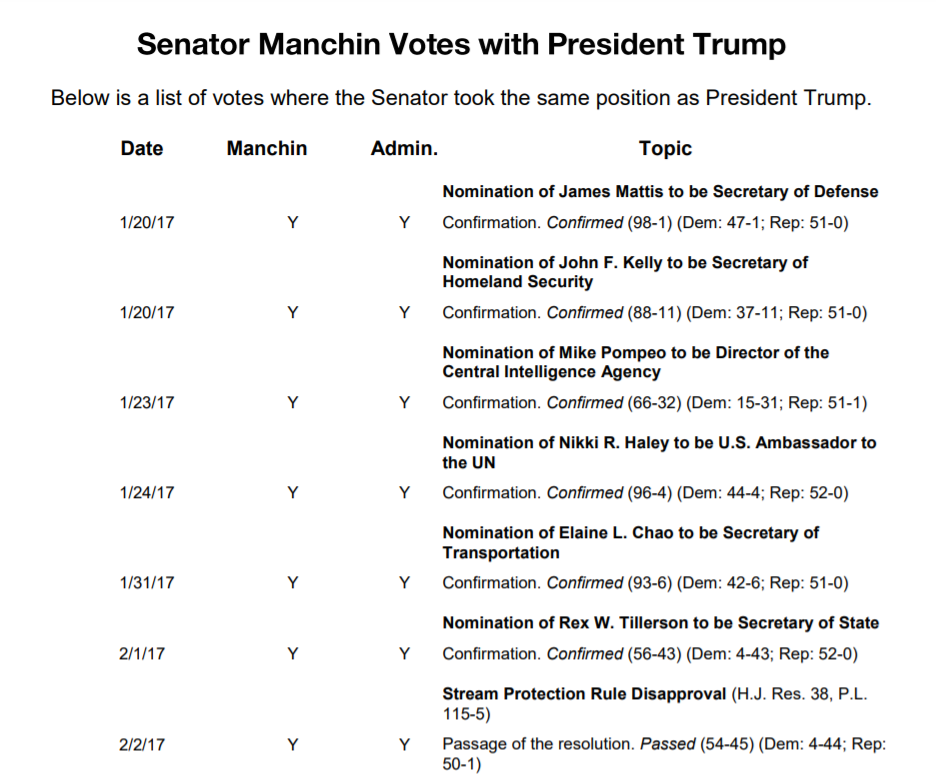
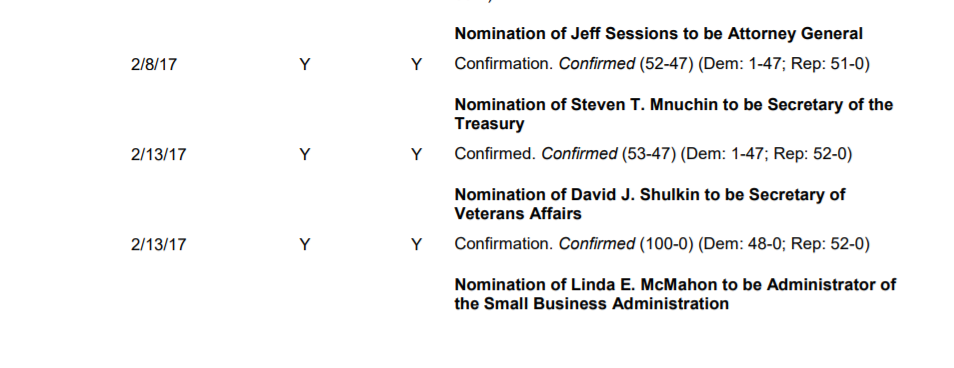
snip
12 pages of that shit
and that is only for the first year and a half of Trump
'Most certainly': Manchin raises concerns about Biden's push for more expansive government
https://edition.cnn.com/2021/04/29/politics/joe-manchin-biden-reaction/index.html(CNN)Sen. Joe Manchin, the powerful West Virginia Democrat, made clear Thursday that the aggressive vision for the federal government that President Joe Biden laid out to the nation must first face scrutiny in Congress, signalling the long slog ahead facing the White House's sweeping domestic agenda. "Oh, most certainly," Manchin told CNN in a one-on-one interview when asked if he had concerns about Biden's push for a more expansive role of government.
Manchin, who is a pivotal swing vote in the 50-50 Senate, said that with signs of a growing economy, on top of the trillions in spending already approved by Congress, lawmakers must be judicious in deciding where to pump additional resources. As he raised concerns about the price tag along with the proposed tax increases, Manchin reiterated his demand for Senate Democrats to work with Republicans and warned that he would oppose efforts by members of his party if they try to go it alone prematurely.
"I'm not for that, I've never been for that and I've told them I'm not for that," Manchin said when asked about talk that Democrats are weighing a budget process to pass a massive infrastructure proposal along party lines. "The bottom line is this place has got to have a chance to work. ... So Joe Biden, the President of the United States, is going to give us a chance and he said, 'OK, try to make it work.' Can't we at least try? Can't we at least let the committee do its work? Let it go to the floor?"
The White House is working on trying to cut a bipartisan deal on a piece of an infrastructure package with Republicans. But it's unclear how long those talks will play out, and when Democratic leaders may try to go -- it alone and use a budget process to pass legislation along party lines, a tactic they used to approve the $1.9 trillion covid relief law. And it remains to be seen how much of Biden's push to approve his $1.8 trillion American Families Plan, on top of his $2.5 trillion American Jobs Plan, can be approved with bipartisan support.
snip




His own Senate website
Senator Manchin has voted with the Trump Administration 74% of the time and shares many of the President’s priorities when it comes to promoting fair trade, repealing Obama-era regulations, and protecting our national security:
https://www.manchin.senate.gov/about/bipartisanship/legislation


https://www.manchin.senate.gov/imo/media/doc/Manchin%20Votes%20with%20Trump.pdf


snip
12 pages of that shit
and that is only for the first year and a half of Trump
May 1, 2021

The US has joined the EU in committing to net-zero emissions by 2050—and the latter to 55 per cent net lower emissions by 2030. Scientists fear the ‘net’ could displace urgency.
https://www.socialeurope.eu/climate-scientists-concept-of-net-zero-is-a-dangerous-trap
Sometimes realisation comes in a blinding flash. Blurred outlines snap into shape and suddenly it all makes sense. Underneath such revelations is typically a much slower-dawning process. Doubts at the back of the mind grow. The sense of confusion that things cannot be made to fit together increases until something clicks. Or perhaps snaps. Collectively we three authors of this article must have spent more than 80 years thinking about climate change. Why has it taken us so long to speak out about the obvious dangers of the concept of net zero? In our defence, the premise of net zero is deceptively simple—and we admit that it deceived us. The threats of climate change are the direct result of there being too much carbon dioxide in the atmosphere. So it follows that we must stop emitting more and even remove some of it. This idea is central to the world’s current plan to avoid catastrophe. In fact, there are many suggestions as to how to actually do this, from mass tree planting, to high tech direct air capture devices that suck out carbon dioxide from the air.
The current consensus is that if we deploy these and other so-called ‘carbon-dioxide removal’ techniques at the same time as reducing our burning of fossil fuels, we can more rapidly halt global warming. Hopefully around the middle of this century we will achieve ‘net zero’. This is the point at which any residual emissions of greenhouse gases are balanced by technologies removing them from the atmosphere. This is a great idea, in principle. Unfortunately, in practice it helps perpetuate a belief in technological salvation and diminishes the sense of urgency surrounding the need to curb emissions now. We have arrived at the painful realisation that the idea of net zero has licensed a recklessly cavalier ‘burn now, pay later’ approach which has seen carbon emissions continue to soar. It has also hastened the destruction of the natural world by increasing deforestation today, and greatly increases the risk of further devastation in the future. To understand how this has happened, how humanity has gambled its civilisation on no more than promises of future solutions, we must return to the late 1980s, when climate change broke out onto the international stage.
Steps towards net zero
On June 22nd 1988, James Hansen was the administrator of Nasa’s Goddard Institute for Space Studies, a prestigious appointment but someone largely unknown outside of academia. By the afternoon of the 23rd he was well on the way to becoming the world’s most famous climate scientist. This was as a direct result of his testimony to the US Congress, when he forensically presented the evidence that the earth’s climate was warming and that humans were the primary cause: ‘The greenhouse effect has been detected, and it is changing our climate now.’ If we had acted on Hanson’s testimony at the time, we would have been able to decarbonise our societies at a rate of around 2 per cent a year in order to give us about a two-in-three chance of limiting warming to no more than 1.5°C. It would have been a huge challenge, but the main task at that time would have been to simply stop the accelerating use of fossil fuels while fairly sharing out future emissions.
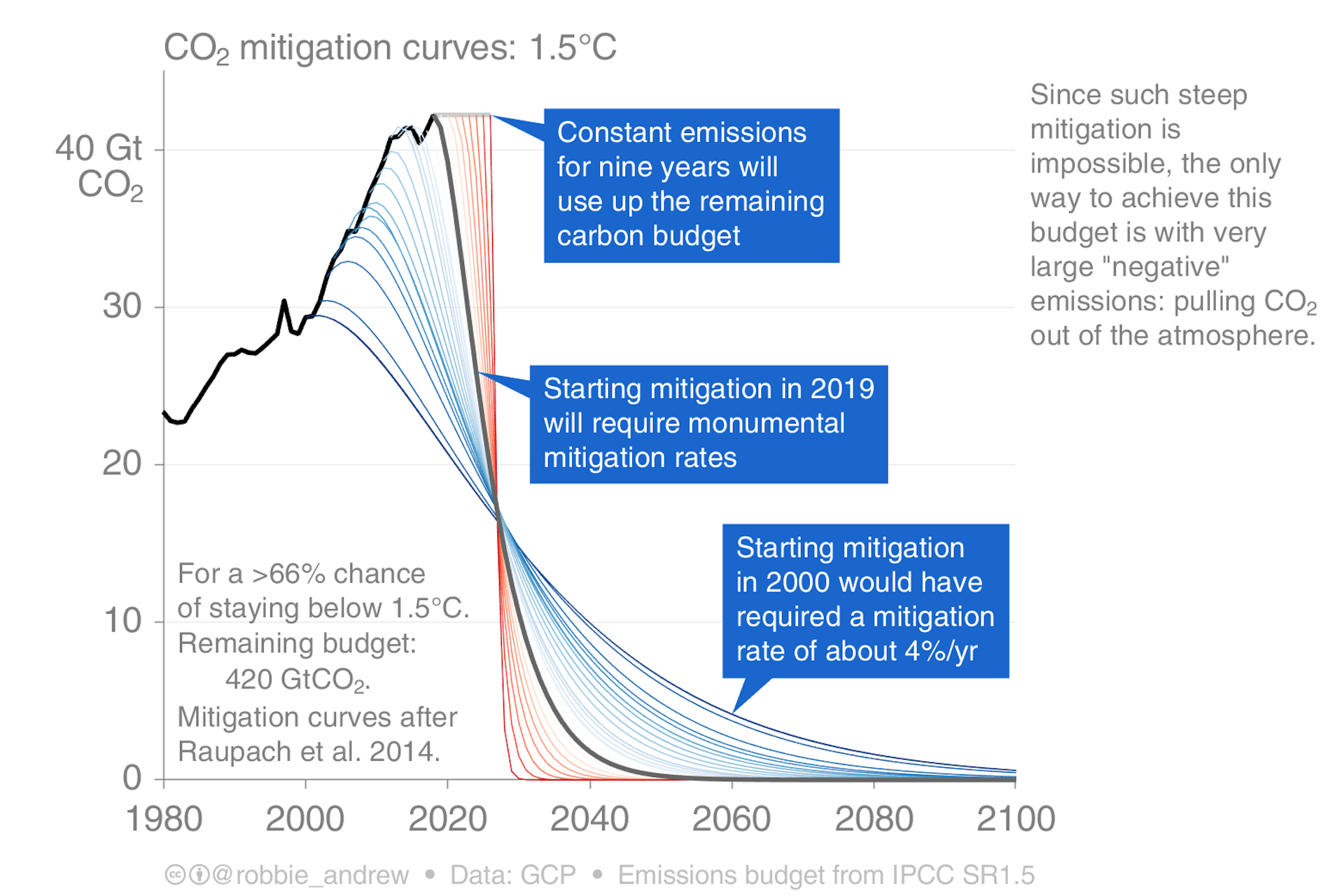
Four years later, there were glimmers of hope that this would be possible. During the 1992 Earth Summit in Rio, all nations agreed to stabilise concentrations of greenhouse gases to ensure that they did not produce dangerous interference with the climate. The 1997 Kyoto summit attempted to start to put that goal into practice. But as the years passed, the initial task of keeping us safe became increasingly hard, given the continual increase in fossil fuel use. It was around that time that the first computer models linking greenhouse-gas emissions to impacts on different sectors of the economy were developed. These hybrid climate-economic models are known as integrated assessment models. They allowed modellers to link economic activity to the climate by, for example, exploring how changes in investments and technology could lead to changes in greenhouse-gas emissions. They seemed like a miracle: you could try out policies on a computer screen before implementing them, saving humanity costly experimentation. They rapidly emerged to become key guidance for climate policy. A primacy they maintain to this day.
snip
much more at the top link

Climate scientists: concept of net zero is a dangerous trap

The US has joined the EU in committing to net-zero emissions by 2050—and the latter to 55 per cent net lower emissions by 2030. Scientists fear the ‘net’ could displace urgency.
https://www.socialeurope.eu/climate-scientists-concept-of-net-zero-is-a-dangerous-trap
Sometimes realisation comes in a blinding flash. Blurred outlines snap into shape and suddenly it all makes sense. Underneath such revelations is typically a much slower-dawning process. Doubts at the back of the mind grow. The sense of confusion that things cannot be made to fit together increases until something clicks. Or perhaps snaps. Collectively we three authors of this article must have spent more than 80 years thinking about climate change. Why has it taken us so long to speak out about the obvious dangers of the concept of net zero? In our defence, the premise of net zero is deceptively simple—and we admit that it deceived us. The threats of climate change are the direct result of there being too much carbon dioxide in the atmosphere. So it follows that we must stop emitting more and even remove some of it. This idea is central to the world’s current plan to avoid catastrophe. In fact, there are many suggestions as to how to actually do this, from mass tree planting, to high tech direct air capture devices that suck out carbon dioxide from the air.
The current consensus is that if we deploy these and other so-called ‘carbon-dioxide removal’ techniques at the same time as reducing our burning of fossil fuels, we can more rapidly halt global warming. Hopefully around the middle of this century we will achieve ‘net zero’. This is the point at which any residual emissions of greenhouse gases are balanced by technologies removing them from the atmosphere. This is a great idea, in principle. Unfortunately, in practice it helps perpetuate a belief in technological salvation and diminishes the sense of urgency surrounding the need to curb emissions now. We have arrived at the painful realisation that the idea of net zero has licensed a recklessly cavalier ‘burn now, pay later’ approach which has seen carbon emissions continue to soar. It has also hastened the destruction of the natural world by increasing deforestation today, and greatly increases the risk of further devastation in the future. To understand how this has happened, how humanity has gambled its civilisation on no more than promises of future solutions, we must return to the late 1980s, when climate change broke out onto the international stage.
Steps towards net zero
On June 22nd 1988, James Hansen was the administrator of Nasa’s Goddard Institute for Space Studies, a prestigious appointment but someone largely unknown outside of academia. By the afternoon of the 23rd he was well on the way to becoming the world’s most famous climate scientist. This was as a direct result of his testimony to the US Congress, when he forensically presented the evidence that the earth’s climate was warming and that humans were the primary cause: ‘The greenhouse effect has been detected, and it is changing our climate now.’ If we had acted on Hanson’s testimony at the time, we would have been able to decarbonise our societies at a rate of around 2 per cent a year in order to give us about a two-in-three chance of limiting warming to no more than 1.5°C. It would have been a huge challenge, but the main task at that time would have been to simply stop the accelerating use of fossil fuels while fairly sharing out future emissions.

Four years later, there were glimmers of hope that this would be possible. During the 1992 Earth Summit in Rio, all nations agreed to stabilise concentrations of greenhouse gases to ensure that they did not produce dangerous interference with the climate. The 1997 Kyoto summit attempted to start to put that goal into practice. But as the years passed, the initial task of keeping us safe became increasingly hard, given the continual increase in fossil fuel use. It was around that time that the first computer models linking greenhouse-gas emissions to impacts on different sectors of the economy were developed. These hybrid climate-economic models are known as integrated assessment models. They allowed modellers to link economic activity to the climate by, for example, exploring how changes in investments and technology could lead to changes in greenhouse-gas emissions. They seemed like a miracle: you could try out policies on a computer screen before implementing them, saving humanity costly experimentation. They rapidly emerged to become key guidance for climate policy. A primacy they maintain to this day.
snip
much more at the top link

May 1, 2021

https://www.thedailybeast.com/biden-calls-bullshit-on-the-gops-pro-family-bluff

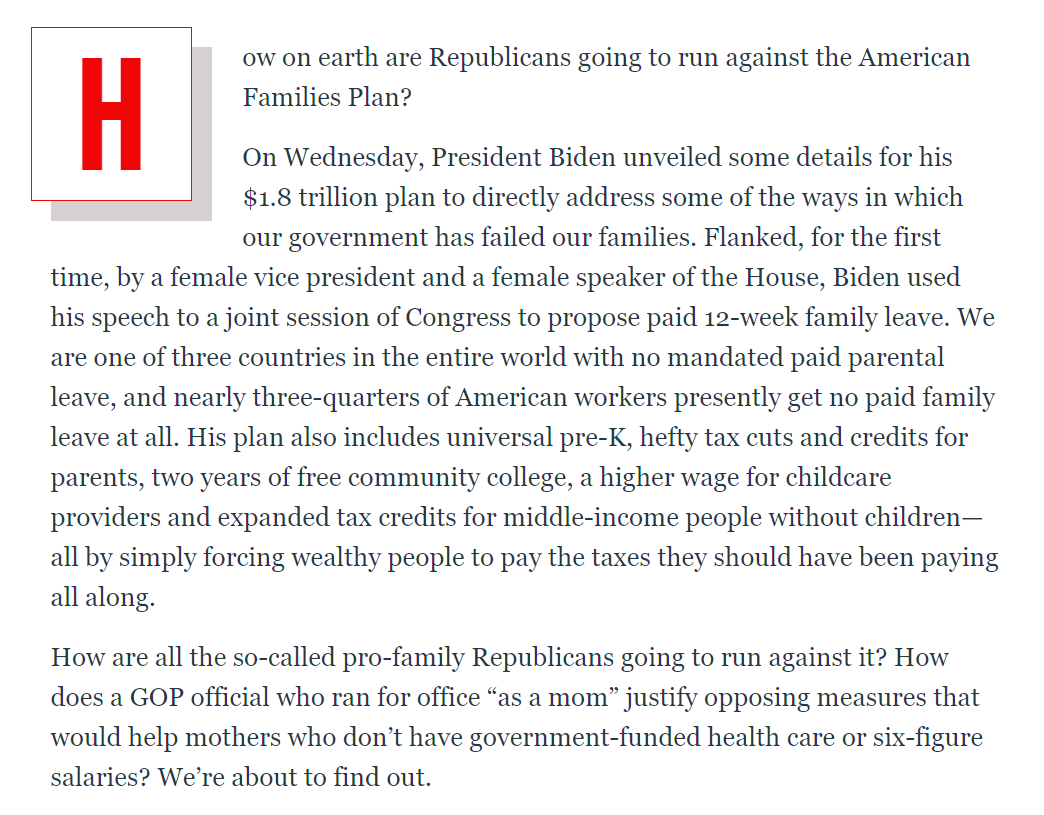

snip

Biden Calls Bullshit on the GOP's 'Pro-Family' Bluff

https://www.thedailybeast.com/biden-calls-bullshit-on-the-gops-pro-family-bluff



snip

May 1, 2021
https://www.ndtv.com/india-news/coronavirus-australia-bans-arrivals-from-india-says-offenders-will-face-jail-fines-2425682
In case some question a single source

Australians Arriving From Covid-Hit India Could Face 5 Years' Jail, Fine
The emergency determination, made late on Friday, is part of strict measures to stop travellers to Australia from the world's second most populous nation as it contends with a surge in COVID-19 cases and deaths.https://www.ndtv.com/india-news/coronavirus-australia-bans-arrivals-from-india-says-offenders-will-face-jail-fines-2425682
Sydney: Australian residents and citizens who have been in India within 14 days of the date they plan to return home will be banned from entering Australia as of Monday and those who disobey will face fines and jail, government officials said.
The temporary emergency determination, issued late on Friday, is the first time Australia has made it a criminal offence for its citizens to return home.
The move is part of strict measures to stop travellers to Australia from the world's second most populous nation as it contends with a surge in COVID-19 cases and deaths.
The restrictions come into effect from May 3 and breaching the ban risks civil penalties and up to five years imprisonment, Health Minister Greg Hunt said in a statement.
"The government does not make these decisions lightly," Hunt said." However, it is critical the integrity of the Australian public health and quarantine systems is protected and the number of COVID-19 cases in quarantine facilities is reduced to a manageable level."
The temporary emergency determination, issued late on Friday, is the first time Australia has made it a criminal offence for its citizens to return home.
The move is part of strict measures to stop travellers to Australia from the world's second most populous nation as it contends with a surge in COVID-19 cases and deaths.
The restrictions come into effect from May 3 and breaching the ban risks civil penalties and up to five years imprisonment, Health Minister Greg Hunt said in a statement.
"The government does not make these decisions lightly," Hunt said." However, it is critical the integrity of the Australian public health and quarantine systems is protected and the number of COVID-19 cases in quarantine facilities is reduced to a manageable level."
In case some question a single source

May 1, 2021

What do you need for a driving playlist? The fizz of the white line, the pull of the horizon, the tires beneath you slurping up the miles … You need forward momentum and you need space—expansiveness. You need regular beats and loads of deep repetition. Spiraling guitars. Engine-rumble. Pockets of dream. And because this is America you also need ZZ Top. Health note: If you get stuck in traffic while listening to this playlist, turn it off. Its urgency and motive force are too great for a static situation. Turn it off, or you’ll go insane. Turn it off and repeat quietly to yourself, 15 or 20 times, this line from Brother Jack Kerouac of blessed memory: You can’t live in this world but there’s nowhere else to go. All right … traffic’s moving again. Turn the music back on. Crank it up.
Follow along on Spotify.




Your weekend driving playlist

What do you need for a driving playlist? The fizz of the white line, the pull of the horizon, the tires beneath you slurping up the miles … You need forward momentum and you need space—expansiveness. You need regular beats and loads of deep repetition. Spiraling guitars. Engine-rumble. Pockets of dream. And because this is America you also need ZZ Top. Health note: If you get stuck in traffic while listening to this playlist, turn it off. Its urgency and motive force are too great for a static situation. Turn it off, or you’ll go insane. Turn it off and repeat quietly to yourself, 15 or 20 times, this line from Brother Jack Kerouac of blessed memory: You can’t live in this world but there’s nowhere else to go. All right … traffic’s moving again. Turn the music back on. Crank it up.
Follow along on Spotify.




April 30, 2021
https://www.nytimes.com/2021/04/30/health/covid-vaccine-hesitancy-white-republican.html

GREENEVILLE, Tenn.— “So have you gotten the vaccine yet?” The question, a friendly greeting to Betty Smith, the pastor’s wife, lingered in the air as the four church women sat down for their regular Tuesday coffee and conversation at Ingle’s Market. Mrs. Smith hesitated, sensing a chilly blast of judgment from a never-mask, never-vax companion. She fumbled through a non-reply. Recalling the moment later, she sighed, “We were there to get to know each other better but the first thing on the table was the Covid vaccine.”
The subject makes her husband, the Rev. David Smith, even more uncomfortable. “Honestly, I wish people wouldn’t ask,” he said, chatting after Wednesday night prayer at Tusculum Baptist Church. “I think it’s none of their business. And it’s just dividing people.” As the beautiful Appalachian spring unfurls across northeastern Tennessee, the Covid-19 vaccine is tearing apart friends, families, congregations, colleagues. “It’s a muddy mess,” said Meredith Shrader, a physician assistant, who runs an events venue with her husband, another pastor, and who notes that the choice has become about much more than health care. “Which voice do you listen to?”
Communities like Greeneville and its surroundings — rural, overwhelmingly Republican, deeply Christian, 95 percent white — are on the radar of President Biden and American health officials, as efforts to vaccinate most of the U.S. population enters a critical phase. These are the places where polls show resistance to the vaccine is most entrenched. While campaigns aimed at convincing Black and Latino urban communities to set aside their vaccine mistrust have made striking gains, towns like these will also have to be convinced if the country is to achieve widespread immunity.

Betty Smith and her husband, Pastor David Smith, of Tusculum Baptist Church, worry the vaccine has become a divisive issue in the community.

Downtown Greeneville, population 15,000, the county seat of Greene County, Tenn., in southern Appalachia.
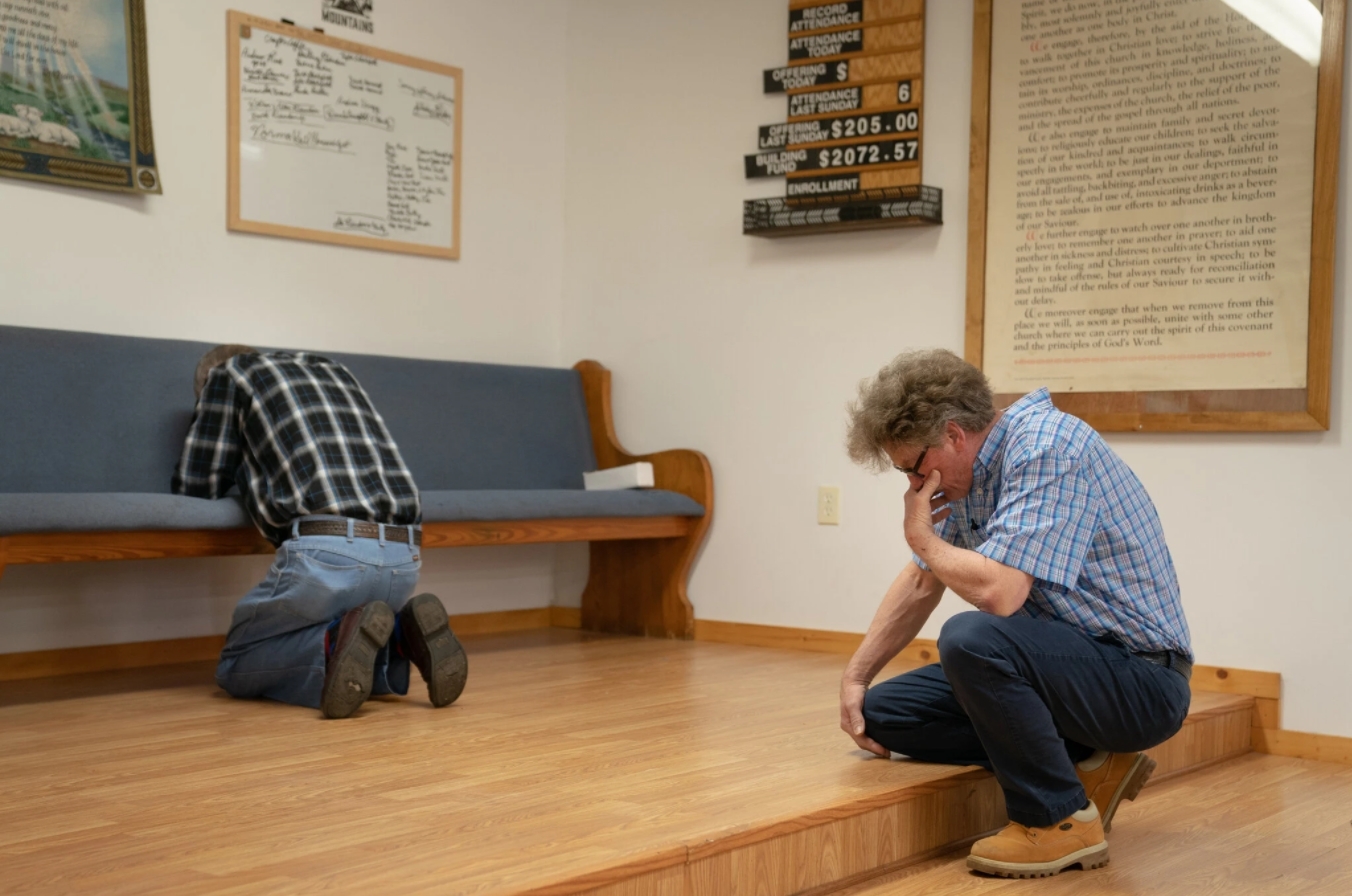
Sunday worship at Old Fashion Gospel House, Bulls Gap, Tenn.
But a week here in Greene County reveals a more nuanced, layered hesitancy than surveys suggest. People say that politics isn’t the leading driver of their vaccine attitudes. The most common reason for their apprehension is fear — that the vaccine was developed in haste, that long-term side effects are unknown. Their decisions are also entangled in a web of views about bodily autonomy, science and authority, plus a powerful regional, somewhat romanticized self-image: We don’t like outsiders messing in our business. According to state health department statistics, 31 percent of the vaccine-eligible population in Greene County has gotten at least one dose of a Covid vaccine, still below Tennessee overall, which has one of the lowest rates in the country, and far below the Centers for Disease Control and Prevention’s national tally of 55 percent. While many older residents have been inoculated, now that eligibility is open to all adults, vaccination sites are almost desolate.
snip
Faith, Freedom, Fear: Rural America's Covid Vaccine Skeptics
Resistance is widespread in white, Republican communities like this one in Appalachia. But it’s far more complicated than just a partisan divide.https://www.nytimes.com/2021/04/30/health/covid-vaccine-hesitancy-white-republican.html

GREENEVILLE, Tenn.— “So have you gotten the vaccine yet?” The question, a friendly greeting to Betty Smith, the pastor’s wife, lingered in the air as the four church women sat down for their regular Tuesday coffee and conversation at Ingle’s Market. Mrs. Smith hesitated, sensing a chilly blast of judgment from a never-mask, never-vax companion. She fumbled through a non-reply. Recalling the moment later, she sighed, “We were there to get to know each other better but the first thing on the table was the Covid vaccine.”
The subject makes her husband, the Rev. David Smith, even more uncomfortable. “Honestly, I wish people wouldn’t ask,” he said, chatting after Wednesday night prayer at Tusculum Baptist Church. “I think it’s none of their business. And it’s just dividing people.” As the beautiful Appalachian spring unfurls across northeastern Tennessee, the Covid-19 vaccine is tearing apart friends, families, congregations, colleagues. “It’s a muddy mess,” said Meredith Shrader, a physician assistant, who runs an events venue with her husband, another pastor, and who notes that the choice has become about much more than health care. “Which voice do you listen to?”
Communities like Greeneville and its surroundings — rural, overwhelmingly Republican, deeply Christian, 95 percent white — are on the radar of President Biden and American health officials, as efforts to vaccinate most of the U.S. population enters a critical phase. These are the places where polls show resistance to the vaccine is most entrenched. While campaigns aimed at convincing Black and Latino urban communities to set aside their vaccine mistrust have made striking gains, towns like these will also have to be convinced if the country is to achieve widespread immunity.

Betty Smith and her husband, Pastor David Smith, of Tusculum Baptist Church, worry the vaccine has become a divisive issue in the community.

Downtown Greeneville, population 15,000, the county seat of Greene County, Tenn., in southern Appalachia.

Sunday worship at Old Fashion Gospel House, Bulls Gap, Tenn.
But a week here in Greene County reveals a more nuanced, layered hesitancy than surveys suggest. People say that politics isn’t the leading driver of their vaccine attitudes. The most common reason for their apprehension is fear — that the vaccine was developed in haste, that long-term side effects are unknown. Their decisions are also entangled in a web of views about bodily autonomy, science and authority, plus a powerful regional, somewhat romanticized self-image: We don’t like outsiders messing in our business. According to state health department statistics, 31 percent of the vaccine-eligible population in Greene County has gotten at least one dose of a Covid vaccine, still below Tennessee overall, which has one of the lowest rates in the country, and far below the Centers for Disease Control and Prevention’s national tally of 55 percent. While many older residents have been inoculated, now that eligibility is open to all adults, vaccination sites are almost desolate.
snip
April 30, 2021
Apr 30, 2021


It’s the first collaboration by the artists.
Diplo, Elderbrook, and Andhim, three of Dance music’s best-known artists, have come together sensationally on the legendary FFRR imprint and Diplo’s Higher Ground to deliver their summer-ready house anthem ‘One By One’.
’One By One’ illustrates each artist’s individual styles, showcasing ‘Diplo’s signature electronic textures, hints of Andhim’s laid-back grooves, and Elderbrook’s dream-like vocals, all of which culminate in a lower-slung vibe, showcasing the trio’s unique production’.
Diplo, Elderbrook & Andhim’s ‘One By One’ is out now on FFRR / Higher Ground.

Diplo - One By One (feat. Elderbrook & Andhim) (Official Audio)
Apr 30, 2021
It’s the first collaboration by the artists.
Diplo, Elderbrook, and Andhim, three of Dance music’s best-known artists, have come together sensationally on the legendary FFRR imprint and Diplo’s Higher Ground to deliver their summer-ready house anthem ‘One By One’.
’One By One’ illustrates each artist’s individual styles, showcasing ‘Diplo’s signature electronic textures, hints of Andhim’s laid-back grooves, and Elderbrook’s dream-like vocals, all of which culminate in a lower-slung vibe, showcasing the trio’s unique production’.
Diplo, Elderbrook & Andhim’s ‘One By One’ is out now on FFRR / Higher Ground.

Profile Information
Gender: FemaleHometown: London
Home country: US/UK/Sweden
Current location: Stockholm, Sweden
Member since: Sun Jul 1, 2018, 07:25 PM
Number of posts: 43,286